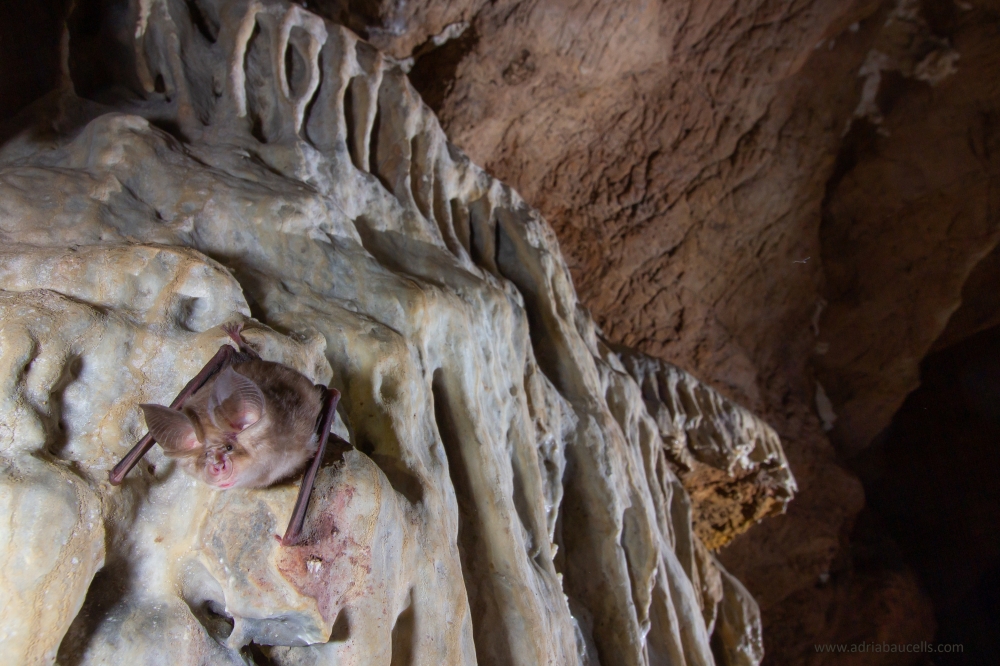Cave Bats Monitoring Group
Especialized, long-term monitoring of cave-dwelling bats in conservation priority roosts.
Cave bats are some of the most vulnerable species to disturbance and destrucion of their roosts, which they need to survive. This working group aims to conduct a monitoring of the population trens of the greater horseshoe bat (Rhinolophus ferrumequinum), the lesser horseshoe bat (Rhinolophus hipposideros), the Mediterranean horseshoe bat (Rhinolophus euryale), the greater mouse-eared bat (Myotis myotis), the lesser mouse-eared bat (Myotis blythii), the Geoffroy's bat (Myotis emarginatus), the long-fingered bat (Myotis capaccinii) and the bent-winged bat (Miniopterus schreibersii).
In order to conduct this monitoring, the methodology and the dates are adapted to the characteristics and phenology of each roost. Yet, for new roosts, roost with few samplings or no recent samplings, it is required to conduct a first year of intensive monitoring throughout all the yearly-cycle of bats (hibernation, sprin migration, breeding and autumn migration/mating). Because of the complexity and intensity of the sampling methodology, it is indispensable that participants live close to the roost area, in order to secure a long-term monitoring.

Quadrícules disponibles Quadrícules assignades
Instructions
The sampling dates change according to the moment of the year when the roost is occupied and if the roost has previous samplings or not:
- New roost without good samplings:
- A census must be conducted between the15th-20th of each month during a year (12 censuses) in order to determine the roost's phenology.
- Migration roost:
- Census twice a month between the 1st-5th and the 15th-20th, from the 1st of February and the 15th of May (8 censuses) and from the 1st of September and the 15th of November (6 censuses). Totalling 14 censuses.
- Reduced protocol: 3 censuses during spring and 3 censuses in autumn every 15 days, during the moment of peak occupation of the roost (this protocol can only be used once a year of sampling have been conducted and the phenology of the roost is well-known).
- Breeding roost:
- 1 census between the 15th-20th of June and 1 census between the 15th-20th of August (2 censuses).
- Hibernation roost:
- 1 census between the 15th-20th of December and 1 census between the 15th-20th of February (2 censuses). During hibernation, passive methods from outside the roost are no use and, in most cases, advanced speleological knowledges are required.
The methods follwo the ChiroRoost protocol and vary depending on the type of roost, even if we will always try to conduct the cenuses from outside the roost in order to cause the minimum disturbance to the colony. If you see that there's some grid close to your home containing some vacant roost, contact us at info@ratpenats.org and we will inform you about the proper methodology.